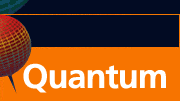CONTACTS
- Coordinator
Sebastian Deffner
-
Quantum Lunch Location:
T-Division Conference Room, TA-3,
Building 123, Room 121
 |


Quantum Institute: Visitor Schedule
The Quantum Lunch is regularly held on Thursdays in the Theoretical Division Conference Room, TA-3, Building 123, Room 121.
The organizing committee includes Malcolm Boshier (P-21), Diego Dalvit (T-4), Michael Di Rosa (C-PCS), Sebastian Deffner (T-4 & CNLS), Changhyun Ryu (P-21) , Nikolai Sinitsyn (T-4), Rolando Somma (T-4), Christopher Ticknor (T-1), and Wojciech Zurek (T-4).
For more information, or to nominate a speaker, contact Sebastian Deffner.
To add your name to the Quantum Lunch email list, contact Ellie Vigil.
Tuesday July 21, 2015
12:30 PM - 2:00 PM
Speaker: Kilian Singer (University of Mainz)
Technical Host: Sebastian Deffner
TOPIC: Characterization of a single ion heat engine and experimental verification of the Kibble-Zurek mechanism
Abstract
An experimental realization of a heat engine with a single ion is presented, which will allow for work extraction even with non-classical thermal reservoirs. To this goal a custom designed linear Paul trap with a single ion performing an Otto cycle is presented. The radial state of the ion is used as the working gas analogous to the gas in a conventional heat engine. The conventional piston is realized by the axial degrees of freedom and the axial motional excitation stores the generated work, just like a conventional fly-wheel. The heat baths can be realized by tailored laser radiation. Alternatively electrical noise can be used to control the state of the ion. The presented system possesses advantageous properties, as the working parameters can be tuned over a broad range and the motional degrees of freedom of the ion can be accurately determined. Dark resonances allow for fast stroboscopic thermometry during the entire working cycle. Monte Carlo simulations are performed to predict the efficiency and the gained work of the working cycle. We have also shown how the equations for the Carnot limit have to be modified if a squeezed thermal reservoir is employed. Furthermore structural phase transitions with laser cooled linear ion crystals are induced verifying the Kibble-Zurek mechanism.
|


